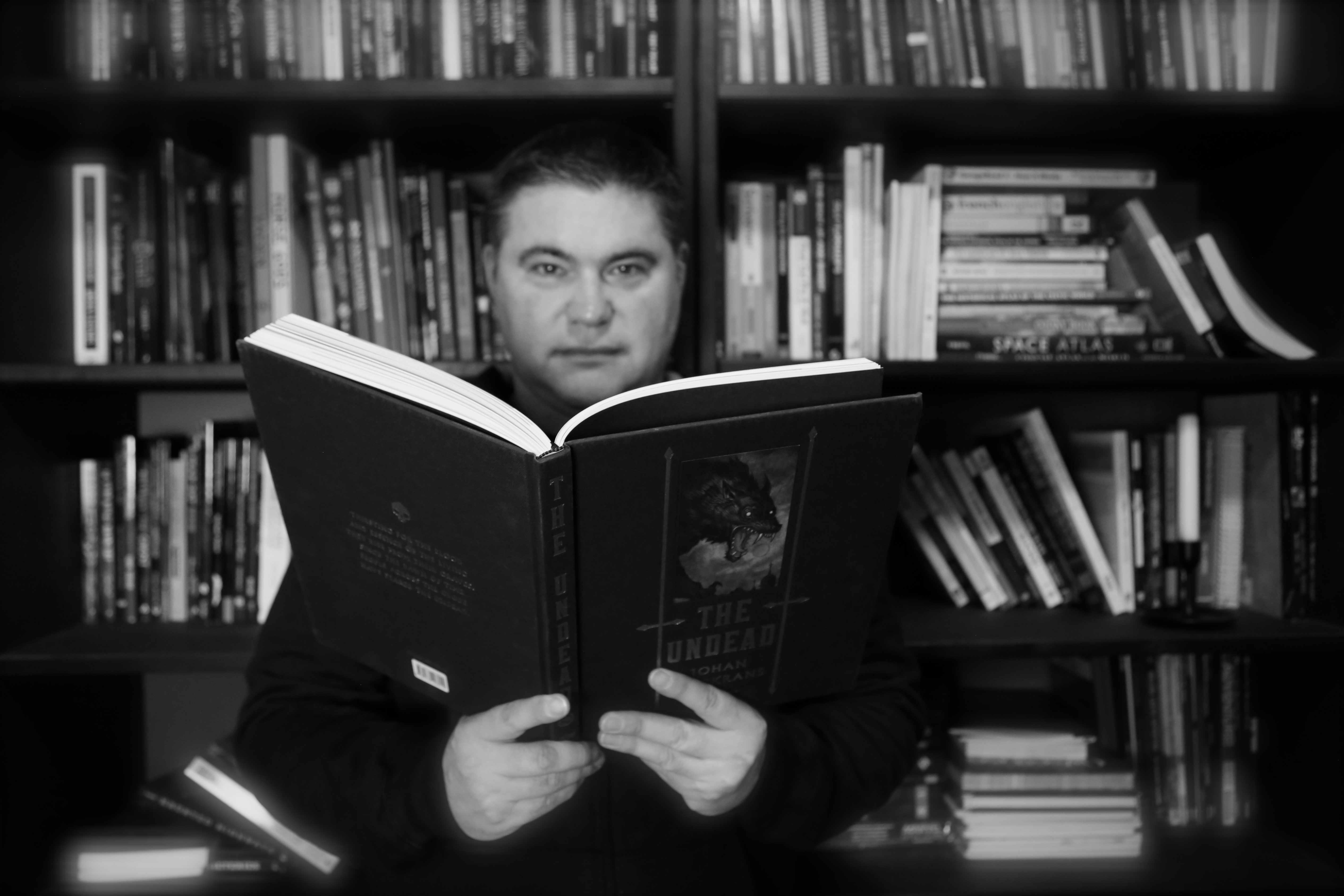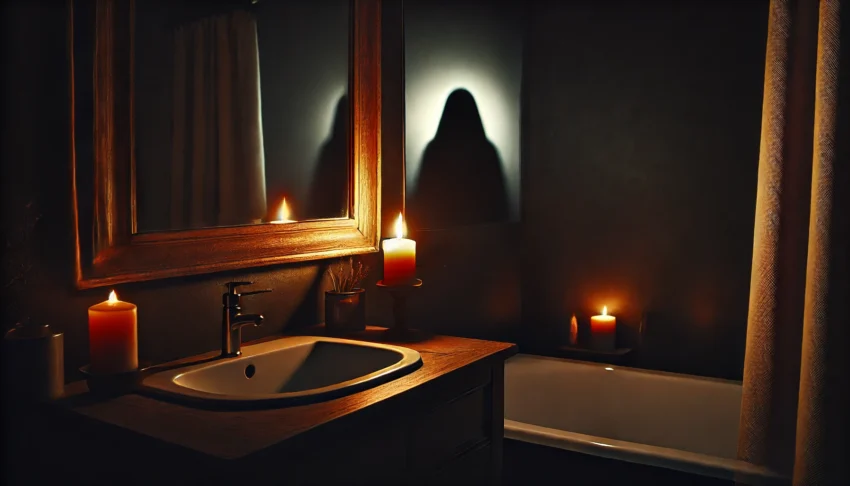
Bloody Mary: Truth, Terror and Reflection
Imagine this. It’s midnight. You’re standing in a dark bathroom, a candle flickering on the counter. You stare into the mirror and whisper, Bloody Mary… Bloody Mary… Bloody Mary. The air seems to change. Shadows move. Is that her face, or just your own warped reflection?
Bloody Mary. She’s haunted sleepovers and dared kids for decades. But who is she really? And why do we keep calling her name?
Table of contents
The Bloody Mary legend is a blend of history, superstition, and good old-fashioned fear. It has been passed down from generation to generation, each version more chilling than the last. It’s a story that taps into our deepest fears—fears of the unknown, fears of the dark, and fears of what might be lurking just out of sight. Let’s explore where this terrifying tale comes from, why it endures, and why we can’t help but test it ourselves.
Origins of the Blood Mary Urban Legend
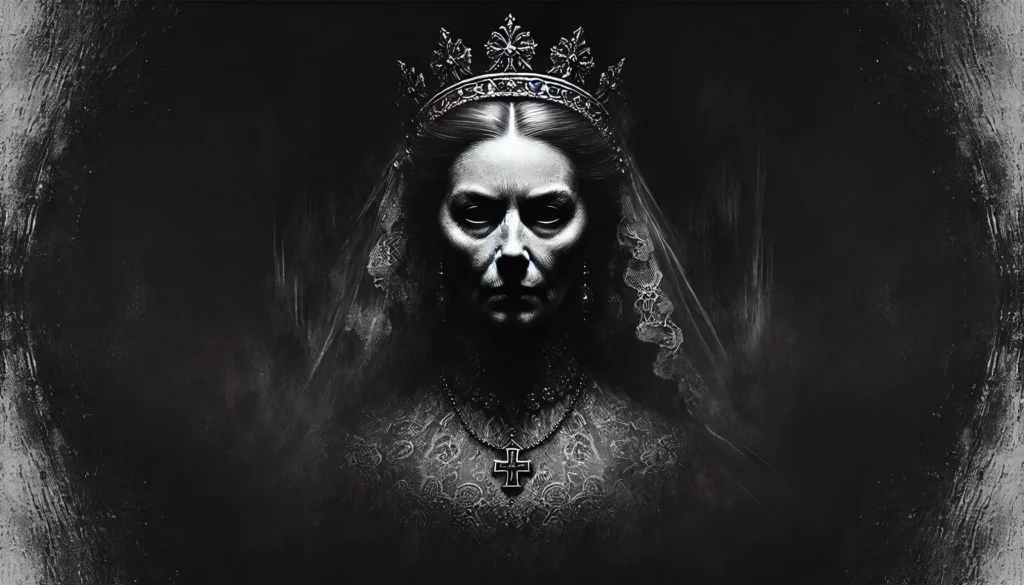
There are lots of theories about who Bloody Mary really was. Some say she was Queen Mary I of England, known for her brutal reign. She burned hundreds at the stake. People called her “Bloody Mary” for a reason. Queen Mary I was desperate to produce an heir, and many believe her tragic miscarriages and phantom pregnancies contributed to her vengeful spirit. Her image in the mirror might represent her endless grief, anger, and a need to inflict pain on others as she herself suffered.
Others think she was just a sad spirit. A woman wronged, trapped in mirrors, looking for revenge. One version says she was a young woman who died in a tragic accident—possibly a car crash—and now her spirit wanders, trying to reach out to the living. Another tale claims she was a witch executed centuries ago, her spirit forever bound to mirrors as a punishment. These stories paint Bloody Mary as a tortured soul, lashing out at those who summon her.
Or maybe it’s even older. Mirrors have always been creepy. People once covered them when someone died, afraid a soul could get trapped. In many cultures, mirrors are seen as gateways to other worlds. The ancient Greeks believed that mirrors could reveal hidden truths, and during the Victorian era, it was common practice to cover mirrors in homes where someone had passed away, to prevent their spirit from becoming trapped. Maybe Bloody Mary is a mix of all these stories—an amalgamation of fear, loss, and the unknown.
The legend has changed over time. Every country has its own version. In Japan, there’s the legend of Hanako-san, a ghost girl who haunts school bathrooms. In Mexico, there’s La Llorona, a grieving spirit who roams near bodies of water. But one thing stays the same: she’s terrifying. Bloody Mary is a universal figure—a manifestation of our fear of what lies beyond, of what might be watching us from the other side of the mirror.
The Ritual
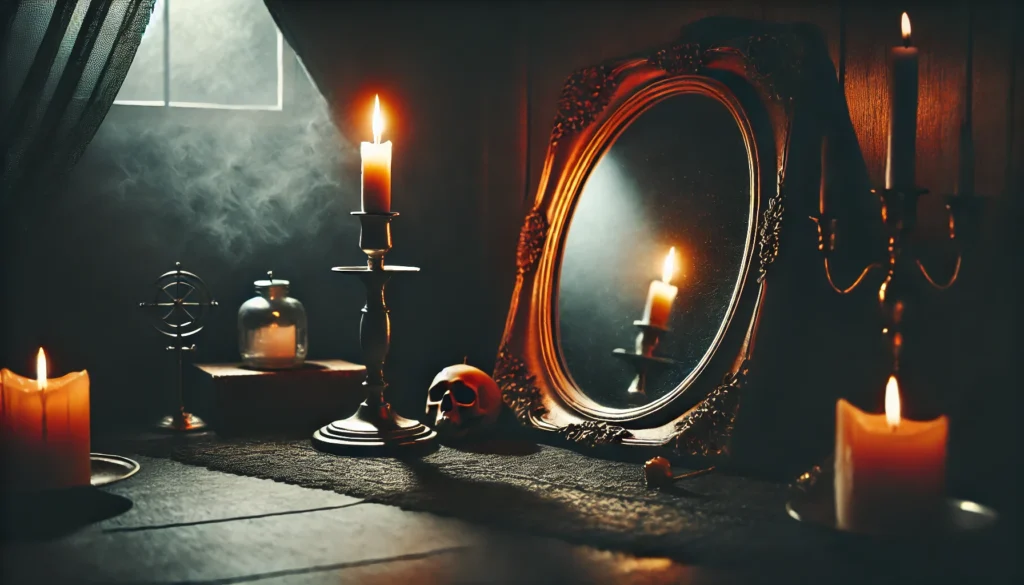
Here’s how it works. You need a dark room. A mirror. A candle, if you want to be extra spooky.
Stand in front of the mirror. Look at yourself. Say her name three times. Or five. Or thirteen. It depends on who you ask. Sometimes people spin around while saying her name. Others splash water on the mirror or light multiple candles. The ritual varies, but the intent is always the same—to summon her.
Then, you wait. Some say you’ll see her face. A pale, twisted visage, with empty eyes and a mouth open in a silent scream. Others claim she’ll scratch you—three claw marks appearing on your face or arms. Or worse, she might pull you into the mirror, trapping you with her forever. Each version is different. But every one is chilling.
Why do we even try it? Maybe it’s about testing our bravery. Maybe it’s about seeing if there’s really something out there, waiting. Whatever the reason, the ritual has captivated people for generations. It’s simple, it’s scary, and it feels dangerous—even if it’s all just a story.
Why Mirrors?
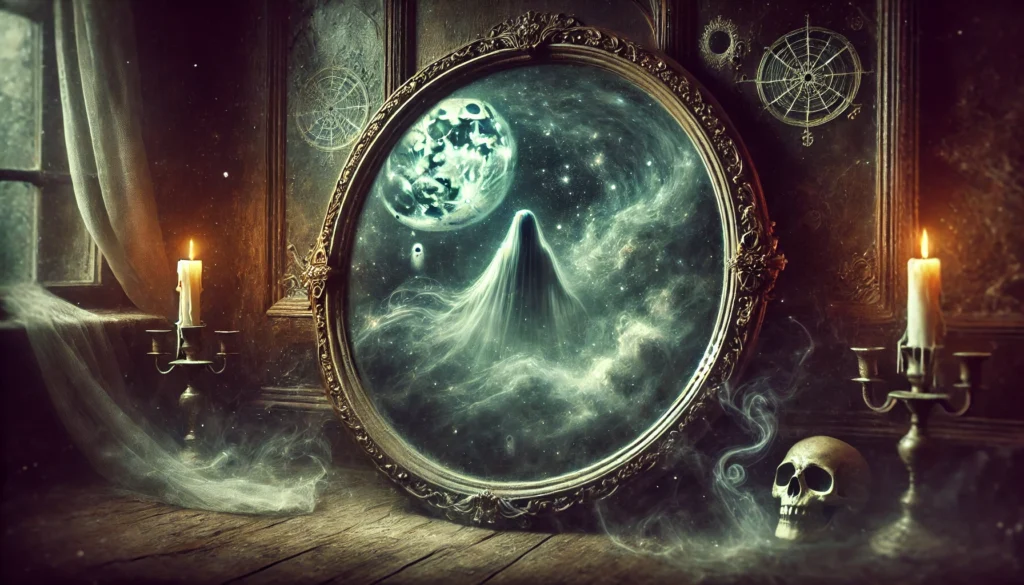
Why do we use mirrors? They’ve always had a connection to the supernatural. People used to think mirrors were portals. A way for spirits to travel. Some say they’re like windows to another world—a thin barrier between us and whatever lies beyond. Mirrors reflect more than just our physical appearance; they have been said to reflect our souls, our fears, and sometimes even things we shouldn’t be able to see.
Mirrors have long been associated with superstitions. In many cultures, breaking a mirror is said to bring seven years of bad luck. Mirrors are often covered in homes of the deceased, to prevent their souls from getting trapped. In folklore, mirrors are also seen as tools for divination. “Scrying,” or using a reflective surface to see visions, is a practice that dates back centuries. It’s easy to see why mirrors have always been viewed with suspicion—they show us what’s real, but also hint at something beyond, something lurking just out of sight.
But there’s also a scientific side. When you stare at a dimly lit mirror, your brain gets confused. It starts filling in the gaps. You might see shadows. Weird shapes. Even faces that aren’t there. It’s called the Troxler Effect. Your brain plays tricks on you. It filters out details that aren’t changing, which can make your face seem to melt away or morph into something else. Add fear to the mix, and suddenly, your reflection becomes something far more sinister.
Is Bloody Mary real? Or just a trick of the mind? Maybe it’s both. Maybe the ritual taps into something deep within us—a fear of our own reflection, of what we might see if we look too closely.
Real Experiences (Allegedly!)
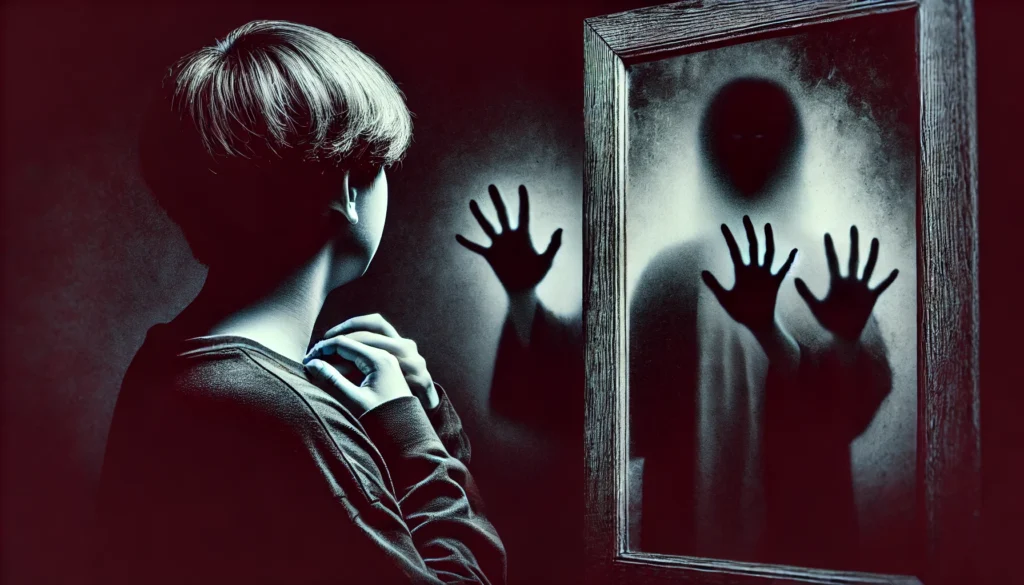
People swear they’ve seen her. I mean, kids talk about it all the time, and the stories always go like this:
“One girl said she saw a face with hollow eyes staring back at her. She ran from the bathroom, her heart pounding, but she could still feel eyes on her. Another felt a cold hand on her shoulder, even though she was alone. Someone else said they heard whispering. Not their own. Words they couldn’t quite understand, but they felt the meaning—a warning, or maybe a threat.”
It’s easy to laugh it off. To say it’s just a trick of the light, or your imagination getting carried away. But when you’re standing there, in the dark, and you feel something behind you… it doesn’t feel like a joke. The stories are all similar—a feeling of dread, a flash of something in the mirror, a sense that you’re not alone.
Some say it’s all in your head. Just fear messing with you. Others? They believe. They think there’s something waiting in that mirror. Something we shouldn’t call. And maybe, just maybe, they’re right.
Why Do We Love Bloody Mary?
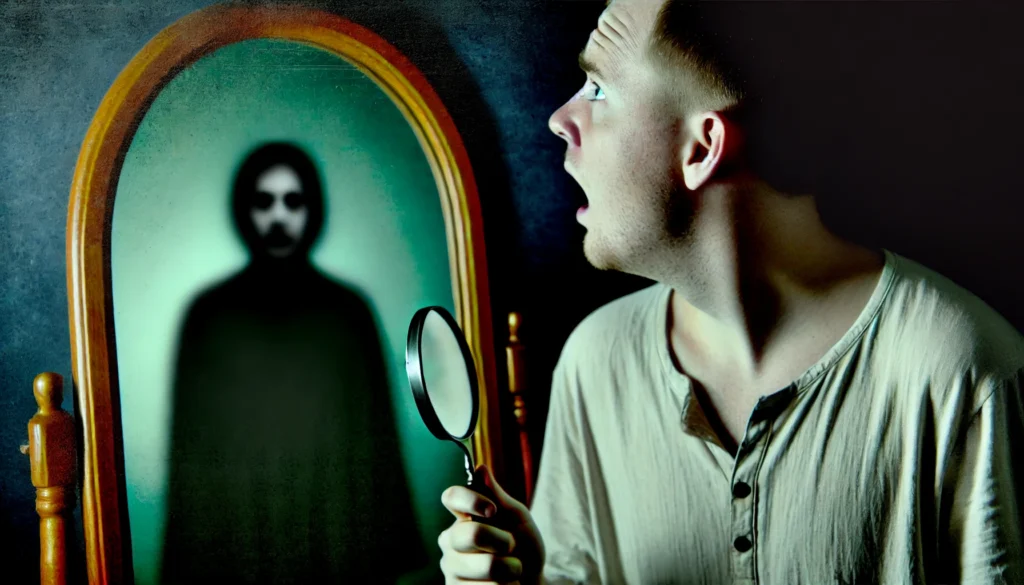
So why do we do it? Why stand in front of a mirror and call her name? Maybe it’s about the thrill. It’s like riding a roller coaster. It scares you, but it’s a safe kind of scare. There’s no real danger—or at least, that’s what we tell ourselves. It’s a way to test our courage, to feel that rush of adrenaline without any real risk.
Kids love dares. They love to prove they aren’t afraid. Bloody Mary is the ultimate test. Can you handle the fear? Can you stand there, in the dark, and call her name without flinching? It’s a rite of passage for many—a way to prove you’re brave, that you can face the unknown and come out unscathed.
And there’s a mystery to it. We all want to know if it’s real. Is there really a ghost in the mirror? Or just our own imagination? The possibility that it might be real is what makes it so compelling. Even if we don’t believe, there’s that tiny part of us that wonders… what if? What if she’s real? What if she’s watching, waiting, just beyond the glass?
Bloody Mary endures because she speaks to something deep within us. Our curiosity. Our fear. Our need to push boundaries and see what’s out there. She’s a legend, a ghost, a reflection of our own darkest fears. And that’s why we keep calling her name.
Conclusion
Bloody Mary is more than just a game. She’s a story that’s lasted for generations. A mix of history, fear, and curiosity. She’s a reflection of our deepest fears—of the unknown, of what might be lurking in the dark, of what we might see if we look too closely.
Next time you find yourself in a dark bathroom, maybe you’ll feel the urge. Maybe you’ll whisper her name. Just remember… she might be listening. And if she is, what will you do?
Sources
“Bloody Mary Urban Legend.” American Folklore, americanfolklore.net/folklore/bloody-mary. Accessed 22 Oct. 2024.
Finucane, Ronald C. Ghosts: Appearances of the Dead and Cultural Transformation. Prometheus Books, 1996.
Hutton, Ronald. The Triumph of the Moon: A History of Modern Pagan Witchcraft. Oxford UP, 1999.
“Mirrors and Superstitions: A Reflective Journey Through History.” Smithsonian Magazine, 15 Oct. 2019, www.smithsonianmag.com/mirrors-superstitions.
Samuels, David. “The Science of Fear: How Our Minds Create Monsters in the Mirror.” Psychology Today, 12 Mar. 2021, www.psychologytoday.com/the-science-of-fear.
Thompson, Emily. Haunted America: Ghost Stories and Urban Legends from Across the States. HarperCollins, 2018.
